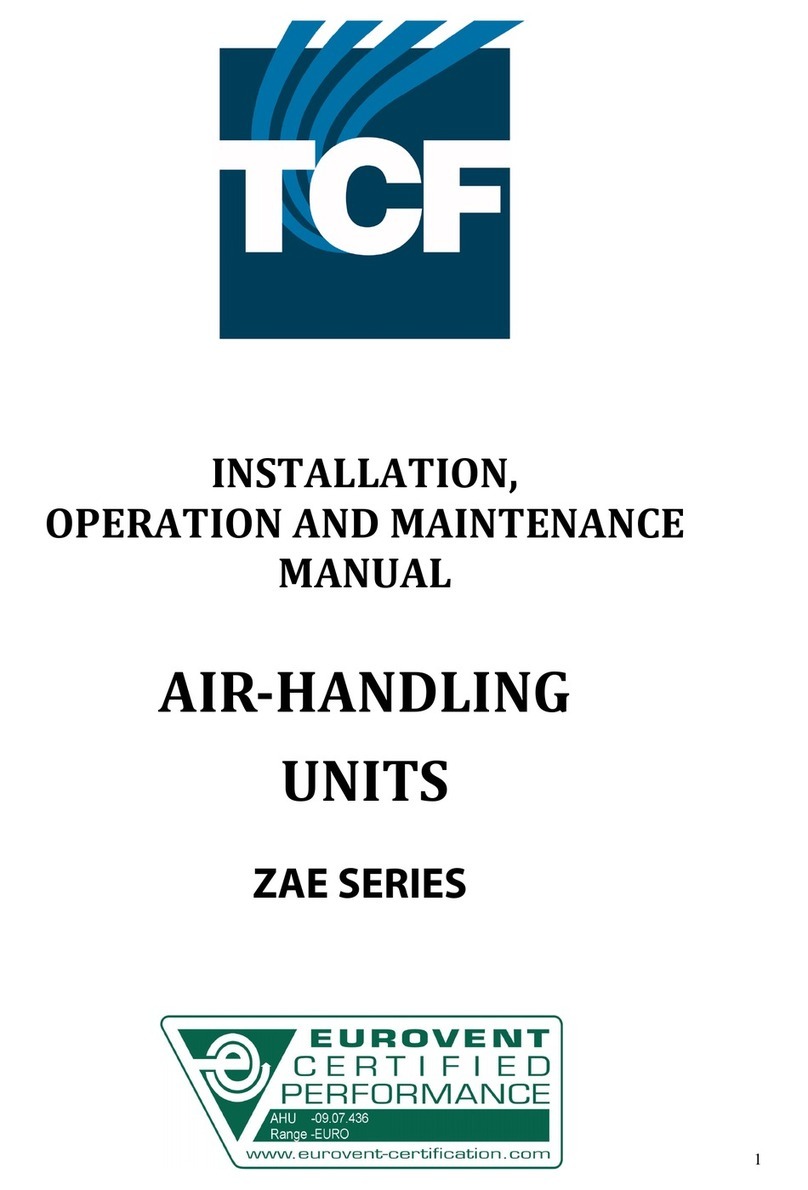
2 TXP Inst. & Maint. Manual: IM-
Table of Contents
Table of Contents..............................2
Purpose of the Operating
Instructions .............................4
Orientation in the Operating
Instructions .............................4
1Identification............................6
1.1 Product Identification .................6
1.2 Contact Information ...................6
1.3 Copyright ..................................6
1.4 Co-Existing Documents .............7
1.5 Rating Plate ..............................7
2SAFETY ...................................9
2.1 Operator's Duty of Care.............9
2.2 Personnel Requirements ...........9
2.2.1 Personnel Qualifications ............9
2.2.2 Unauthorized Person............... 10
2.3 Personal Protective Equipment 10
2.4 Appropriate Use ......................11
2.5 Predictable Misapplication .......12
2.6 Conversions and Changes....... 12
2.7 Residual Risks ........................12
2.7.1 Hazards from Fans..................13
2.7.2 Hazards from Electrical Energy 17
2.7.3 Exposure to Noise ...................18
2.7.4 Hazards from the Environment. 19
2.7.5 Thermal Hazards.....................19
2.7.6 Hazards Due to Resonances and
Vibrations................................20
2.7.7 Hazards when Operating Multiple
Fans .......................................20
2.8 Safety and Surveillance
Equipment............................... 21
2.8.1 General...................................21
2.8.2 Existing Safety Devices ........... 22
2.8.3 Safety Instructions on the Fan . 23
2.9 Emergency Information ........... 24
3PRODUCTCT DESCRIPTION,
STRUCTURE AND FUNCTION
............................................... 24
3.1 Specifications.......................... 24
3.2 Equipment and Accessories .... 24
3.3 Construction............................ 24
3.3.1 General Overview ................... 24
3.3.2 Power Supply.......................... 25
3.3.3 Frequency............................... 26
3.3.4 Heat Shield ............................. 26
3.4 Description.............................. 26
3.5 Interfaces................................ 26
3.6 Modes .................................... 26
3.6.1 Continuous Operation S1 ........ 27
3.6.2 Speed-Controlled Operation S927
3.7 Natural Frequencies................ 27
4TRANSPORT AND STORAGE27
4.1 Introductory Notes on Safety ... 27
4.2 Delivery .................................. 27
4.2.1 Scope of Delivery.................... 27
4.2.2 Checking for Transport Damage
............................................... 27
4.3 Packaging............................... 28
4.4 Transport ................................ 28
4.4.1 Permissible Means of Transport
............................................... 28
4.4.2 Transport Information .............. 28
4.4.3 Transport of Pallets by Crane .. 29
4.4.4 Transport of Pallets by Lifting
Vehicle ................................... 30
4.4.5 Transporting the Unpacked Fan
............................................... 30
4.4.6 Incorrect Transport.................. 31
























